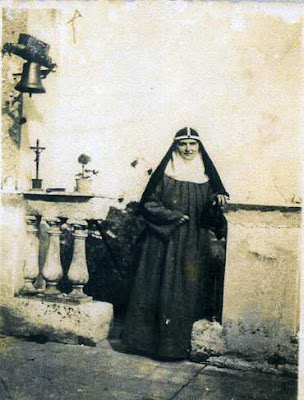St. Mother Teresa of Cacutta viewed silence as essential for prayer, spiritual growth, and finding God. She believed that silence is where one can hear God's voice, and this leads to a chain reaction: the fruit of silence is prayer, the fruit of prayer is faith, the fruit of faith is love, the fruit of love is service, and the fruit of service is peace. This "silence" involved not just the absence of noise, but also a mental and emotional stillness—the silence of the mind, eyes, ears, and heart—to be truly present and open to God's will.
The first reading for this Sunday, again from Isaiah (35:1-2): The desert and the parched land will exult; the steppe will rejoice and bloom. They will bloom with abundant flowers, and rejoice with joyful song... they will see the glory of the Lord, the splendor of our God.
These few lines set the tone for the day, giving us a very descriptive picture of place- a place that many have never seen, but for those of us who live in the west, the desert is a very mysterious and almost sacred place. To the natives who have lived on this land for hundreds of years it is sacred.
Upon reflection, I don't think I ever visited the desert, that I was not aware of the silence that inhabitated the greatness, yet the vast emptiness of space. Through most if the year it is a colorless place, but come spring it is glorious beyond measure.
In the heart of the vast desert lies a profound stillness, a silence so powerful it speaks volumes without uttering a single word. One must listen to the "silent sounds", which permeate the place.
The Church gives us this reading to remind us that we are in a sort of desert, not only in Advent as we await the coming of the Christ Child, but our life is a desert as we travel to the heavenly homeland. In the midst of that waiting, we at times are given a glimpse of the glory to come. What is it about the desert that makes it a good meeting place for the Lord? It is in that stillness, that we hear the voice of the Lord who waits for us.
...all men need enough silence and solitude in their lives to enable the deep inner voice of their own true self to be heard at least occasionally. When that inner voice is not heard, when man cannot attain to the spiritual peace that comes from being perfectly at one with his true self, his life is always miserable and exhausting. For he cannot go on happily for long unless he is in contact with the springs of spiritual life which are hidden in the depths of his own soul. If man is constantly exiled from his own home, locked out of his own spiritual solitude, he ceases to be a true person. He no longer lives as a man. (Thomas Merton, The Silent Life)
Here
is your God,
he comes with vindication;
with divine recompense
he comes to save you.
Then will the eyes of the blind be opened,
the ears of the deaf be cleared;
then will the lame leap like a stag,
then the tongue of the mute will sing. (Isaiah 35: 4-5)
Paintings: Rick Jaramillo



























.jpg)